
Federico Fellini was an Italian film director and screenwriter. He is known for his distinctive style, which blends fantasy and baroque images with earthiness. He is recognized as one of the greatest and most influential filmmakers of all time. His films have ranked highly in critical polls such as that of Cahiers du Cinéma and Sight & Sound, which lists his 1963 film 8+1⁄2 as the 10th-greatest film.

Historical fiction is a literary genre in which a fictional plot takes place in the setting of particular real historical events. Although the term is commonly used as a synonym for historical fiction literature, it can also be applied to other types of narrative, including theatre, opera, cinema, and television, as well as video games and graphic novels. It often makes many use of symbolism in allegory using figurative and metaphorical elements to picture a story.

Massimo Taparelli, Marquess of Azeglio, commonly called Massimo d'Azeglio, was a Piedmontese-Italian statesman, novelist, and painter. He was Prime Minister of Sardinia for almost three years until succeeded by his rival Camillo Benso, Count of Cavour. D'Azeglio was a moderate liberal and member of the Moderate Party associated with the Historical Right. He hoped for a federal union between Italian states.

Barletta is a city and comune in Apulia, in southeastern Italy. Barletta is the capoluogo, together with Andria and Trani, of the Province of Barletta-Andria-Trani. It has a population of around 94,700 citizens.
Mignano Monte Lungo is a comune (municipality) in the Province of Caserta in the Italian region Campania, located about 70 kilometres (43 mi) northwest of Naples and about 45 kilometres (28 mi) northwest of Caserta.

The Challenge of Barletta was a duel fought in the countryside of Trani, near Barletta, Southern Italy, on 13 February 1503, during the Third Italian War, on the plains between Corato and Andria.
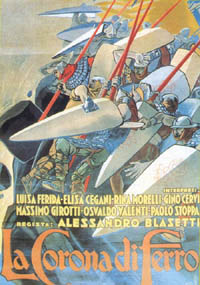
The Iron Crown is a 1941 Italian adventure film written and directed by Alessandro Blasetti, starring Massimo Girotti and Gino Cervi. The narrative revolves a sacred iron crown and a king who is prophesied to lose his kingdom to his nephew. It blends motifs from several European myths, legends and modern works of popular fiction. The film won a Coppa Mussolini award, which is the ancestor to the Golden Lion.
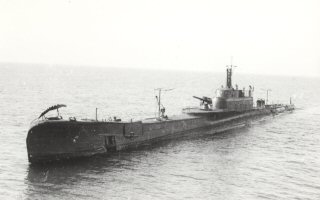
Ettore Fieramosca was an Italian submarine which served with the Regia Marina in World War II. She was named after Ettore Fieramosca, an Italian condottiero of the 16th century.

Ettore Fieramosca was an Italian condottiero and nobleman during the Italian Wars. His father was Rainaldo, baron of Rocca d'Evandro, and it is thought that his mother was a noblewoman from the Gaetani family. The family inherited and occupied the Castle of Mignano.

The Piaggio P.8 was an Italian reconnaissance floatplane designed and built by Piaggio for the Regia Marina.

The Macchi M.53 was an Italian reconnaissance floatplane designed and built in the late 1920s by Macchi for the Regia Marina.
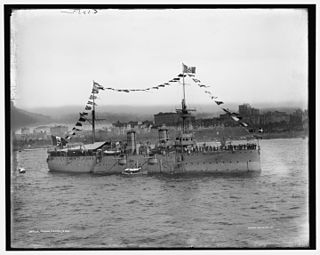
The Etna class was a series of protected cruisers that were built in the late 1880s for the Regia Marina. The four ships built were slightly enlarged copies of the Elswick Works' design for the protected cruiser Giovanni Bausan. Etna, the lead ship of the class, was the only ship still in service when World War I began, although she served as a stationary headquarters ship for the Navy Commander-in-Chief in Taranto for the duration of the war. The three later ships all participated in putting down the Boxer Rebellion as part of the Eight-Nation Alliance. The three were struck from the Navy List before 1912, but Etna was not sold for scrap until 1921.

Soldier of Fortune is a 1976 Italian comedy film directed by Pasquale Festa Campanile. The film tells of the challenge of Barletta in a comic and grotesque style.
Ettore is a given name, the Italian version of Hector.
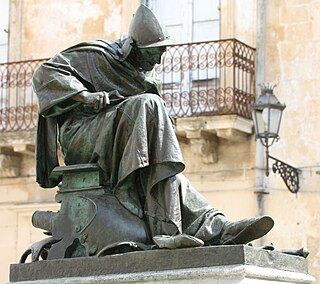
Bartolomeo Fanfulla was an Italian condottiero.
Ettore Fieramosca may refer to:

Ettore Fieramosca is a 1938 Italian historical film directed by Alessandro Blasetti and starring Gino Cervi, Mario Ferrari and Elisa Cegani. It is adapted from the 1833 novel of the same title by Massimo D'Azeglio, based on the life of the 16th century condottiero Ettore Fieramosca.

Mario Ferrari was an Italian film actor. After making his debut in 1920, Ferrari became a mainstay of Italian cinema during the Fascist era appearing in a mixture of leading and supporting roles. He played the villainous Graiano d'Asti in the historical film Ettore Fieramosca (1938). Ferrari continued to work regularly in the post-Second World War years.
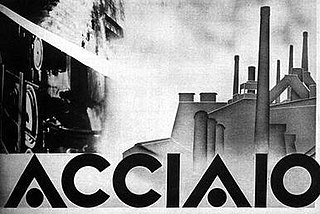
Steel is a 1933 Italian drama film directed by Walter Ruttmann and starring Piero Pastore, Isa Pola and Vittorio Bellaccini. The film was shot on location at the steel mills in Terni in Umbria. It was based on the novel Giuoca, Pietro! by Luigi Pirandello. With its semi-documentary style it was one of a number of films made in the Fascist era that serve as a precursor to Italian neorealism which emerged in the mid-1940s.

Ettore Fieramosca was a protected cruiser of the Italian Regia Marina built in the 1880s. She was the fourth and final member of the Etna class, which included three sister ships of slightly smaller dimensions. Named for the condottiero of the same name, she was the only member of her class not named for a volcano. The ship was laid down in December 1885, launched in August 1888, and was commissioned in November 1889. She was armed with a main battery of two 254 mm (10 in) and a secondary battery of six 152 mm (6 in) guns, and could steam at a speed of around 17 knots.

















